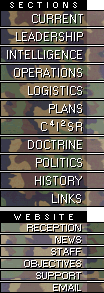





India's Rising Military Expenditure
May 30, 2001
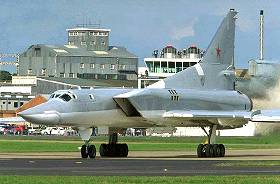
ndia continues to arm and expand her Armed Forces at an unprecedented scale and yet talk of peace and stability in South Asia. India already has the third largest Army in the world and is the biggest military power in the South Asian region, with no external threat whatsoever to her security.
This feverish expansion in her military's aggressive potential is most likely to upset the regional balance of power in South Asia, thereby, destabilizing the region and may be edging it closer to an armed conflict.
In the present budget presented to parliament for the financial year 2001-2002 defence has been allocated Rs 620,000.00 million. This amount shows an increase of Rs 75,000 million over last year's revised estimates of Rs 544,610 million, or an increase of about 14 percent in defence spending this year. Last year India increased its defence budget by a whopping 28.2 percent or Rs 130,000.00 million. (by $ 3 billion to a total defence spending of $ 13.5 billion) Three years earlier in 1997 India's defence budget was increased by 24.4 percent and in 1994 by 20 percent. In between these major escalations there have been yearly increases ranging from 10 to 12 percent.
These large-scale increases in India's defence spending are certainly well beyond her legitimate defence and security requirements and consequently a source of great concern for her small neighbours particularly Pakistan which is now the only truly independent country on the periphery of India. This increase in India's defence spending has also surprised the foreign donors particularly those from the west who are helping India to cope with the financial and other losses after the disastrous earthquake in the province of Gujarat. It amounts to India diverting her own financial resources for unnecessarily expanding her Armed Forces and leaving the rehabilitation of the poor people of Gujarat to foreign sympathy donors.
Pakistan's Foreign Office voiced the governments deep concern and said India had launched itself on a massive programme of expansion of its conventional military capabilities without regard to regional stability. It strongly felt that the increase would upset the military balance in South Asia. The Foreign Office spokesman went on to say that "the massive acquisition of armaments by India is a cause for concern for Pakistan because the bulk of India's army is deployed on the Pakistani border. Therefore, we cannot but be deeply concerned." He also referred to India's huge 28.2 percent defence spending hike last year and the recent multi-billion dollar arms purchase from Russia.
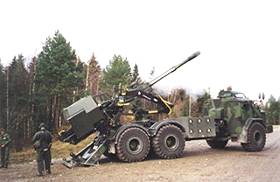
In Pakistan on the other hand defence expenditure has not been increased for many years now. In 1994 when India raised its defence expenditure by 20 percent, the Prime Minister of Pakistan had remarked at the time that even in view of India's 20 percent increase in its defence budget, Pakistan cannot watch it, because if it did it would not be able to meet the 5.4 percent budget deficit target agreed with the IMF by the Moeen Qureshi government. The same principle guided the Pakistan government thinking in 1997 when India raised her defence spending by 24.4 percent, from Rs 364.9 billion in 1996 to Rs 454.2 billion in 1997. Last year while India raised her defence spending by 28.2 percent, Pakistan did not react but in fact reduced her defence spending by 8 percent. The amount thus saved was diverted to the government's poverty alleviation programme.
This year the federal cabinet under the chairmanship of the Chief Executive General Pervez Musharraf has decided in principle not to increase the defence budget, as proposed by the debt Reduction and Management Committee. A few days later while addressing the Young Presidents Organization (YPO) at Lahore the federal finance minister Shaukat Aziz said that the defence budget was being reduced. He said it had already been brought down to 4.70 percent of the GDP from over 8 percent during the past several years. At present to country's defence budget constituted 20 percent of its annual budget. He went on to say that 50 percent of the budget went to debt servicing. Pakistan is keeping her defence spending within her financial constraints imposed on the nation by the self-destruct financial policies adopted by the elected and unelected caretaker governments during the past decade.
Increase in India's defence expenditure is mainly utilized for the purchase of modern weapons, and equipment from abroad. Some amount is also used for updating her large indigenous weapons manufacturing base at home. Some additional induction of manpower for new weapons including guns and missiles of raising units and formation HQ in the Army, new aircraft in the Air Force and new surface ships, submarines, and an aircraft carrier for the Navy are also required. India's defence allocation in any case is not a true reflection of her defence spending as large amounts are shown under different heads in other ministries for security reasons, and often to bypass export regulations of other countries from where banned items may be imported.
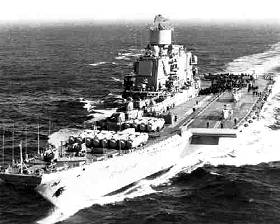
India's recent negotiations and firm orders include 400 Bofors guns (used in Kargil) from Sweden, 310 modern T-90 tanks from Russia, mine-blast protection vehicles from Israel and ground and air surveillance devices for the army. The Indian Air Force was allocated a large amount for the purchase of 140 SU-30-MKI multirole fighter aircraft from Russia. 60 of the same aircraft were ordered earlier, 30 in 1966 and 30 in 1998, of these 18 aircraft have already reached India.
In addition to these India's Chief of Air Staff, Air Chief Marshal A.Y. Tipnis indicated at the 68th anniversary of the Indian Air Force that India was purchasing some more Mirage 2000 fighters from France, Jaguars from UK and M-17 helicopters from Russia. Negotiations are in progress for the purchase of a large number about 60-70 of advanced jet trainers (AJT) from UK.
For the Navy, India is purchasing a Russian aircraft carrier, the "Admiral Gorshkov". The carrier is a free gift but India has agreed to pay $ 650 million for a full refit of the ship. The Navy is also purchasing 40 Russian MIG-29K aircraft which would be the air arm of the new carrier. Another 26 could be added later. India has ordered three Krivak class frigates from Russia at a cost of about $ 1 billion. India is also negotiating with Russia for the lease of a nuclear submarine. The previous one INS "Chakra" was returned to Russia (the USSR) in the late 1980s after a three year's lease. The Navy has also purchased five KA-31 marine AEW helicopters. These could be used from the Russian aircraft carrier.
The 'Hindustan Times' reported from New Delhi on February 2nd 2001 that Russia was preparing to sign the lease of four TU-22M3 (backfire) long-range bombers armed with deadly KH-22 cruise missiles having a range of 500 km. The supersonic TU-22M3 bomber has a maximum range of 2410 km when flying at subsonic speed, and carrying a 12-tonne payload of bombs and missiles.
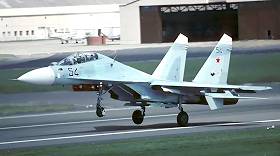
The allocation for the ordinance factories and other defence production and research facilities has been increased four times for Rs 2,620 million to Rs 10,320 million this year. India's nuclear and missile programme are also being pursued with great vigour and a lavish allocation of financial resources. New Delhi is building a "Credible nuclear deterrent", which according to defence analysts could cost upto $ 500 million a year.
I asked the Ambassador of the Russian Federation to Pakistan, HE Eduard S. Shevchenko during his trip to Karachi recently that India's purchase of large scale modern armaments from Russia was a source of great concern to Pakistan.
Particularly so when a clause in the present Indo-Russian contracts stipulates that the same items would not be sold to Pakistan. I reminded the ambassador that during the 1965 Indo-Pak war we outgunned the Indian artillery by only one regiment of 12 guns. After the war India purchased 400,130 mm long range guns from the USSR. But the USSR sold a 100 of the same guns to Pakistan as well. Thus keeping a ratio of 4 to 1 between the two armies. A four to one superiority by India is acceptable and can be handled by Pakistan. A balance was, therefore, maintained.
The Russian ambassador to Pakistan Mr Eduard Shevchenko is a charming career diplomat and said with the greatest of candour that if Russia did not sell arms to India, it could purchase the same from other countries. This is certainly true as other western countries are only too willing to oblige India. Russia is the fourth largest arms exporter of the world, way down after USA, UK and France. The ambassador went on to say that he was not aware if Pakistan had in fact shown a desire to purchase arms from Russia. He seemed to imply that Russia would certainly consider the offer.
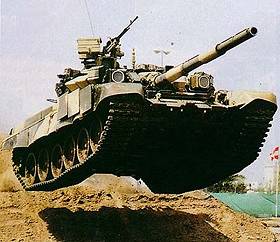
The former Indian Defence Minister George Fernandes was adamant in maintaining that the increase in defence spending "will help us keep up the pace of weapons upgrading and modernization drives in the Armed Forces".
He went to the extent of saying after the massive damage of over Rs 14,000 crore in the Gujarat earthquake that: "No matter what problems, economic or otherwise, the country may face, the national defence cannot be held hostage to it".
He did not care to clarify that he wanted a strong defence against whom, when India had only small neighbours to contend with. In any case most of the defence items being imported by India had strong offensive overtures. It was the offensive capability of the Armed forces that was being enhanced.
The Indian Prime Minister Mr Vajpayee was, however, worried about the fiscal deficit.
While defending the budget outlay he said that strong steps were needed to tackle India's fiscal deficit which is targeted for next year at 4.7 percent of the GDP against its present 5.1 percent. "The increasing fiscal deficit was becoming a cause for concern, which is why we have had to take some hard steps to control it". Vajpayee told reporters after Finance Minister Sinha's presentation. Mr Vajpayee who is a moderate and the future hope of peace in South Asia was certainly pressurized by the hawks, to raise the defence budget. Certainly a step in the wrong directions.
It must be appreciated by all that for peace in South Asia there must be peace and amity between India and Pakistan. By the induction of more lethal and destructive arms into the region the objective of peace cannot be achieved. Greater the quantum of arms, greater would be the mistrust between India and Pakistan and greater the tension between the two. When tension increases violent actions are bound to follow, shattering the desired political will for peace.
Instead of purchasing more arms and destabilizing the region, what is required urgently is to initiate some confidence building measures. The prospect of an armed conflict should be reduced to the minimum particularly in the present nuclear environment that exists in South Asia. Resort to arms has failed to solve Indo-Pak problems in the past and are not likely to do so in the future as well. Measures adopted so far by India and Pakistan with regard to Kashmir have certainly borne fruit. There is less tension along the line of control in Kashmir as the guns are silent and should continue to be so.
The next logical step should be a dialogue between India and Pakistan to solve the long outstanding dispute on the status of Jammu and Kashmir. Solving the dispute in a spirit of some compromise on either side should bring peace to the region which seems to be the desire of the people.
Text source: LTG Sardar F. S. Lodi, Defence Journal, May 2001
© 2001 CheckPoint |














